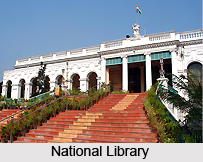 The Alipur region is situated in the southern part of the `City of Joy`, Kolkata. In the post independence period it became the home of the business elite class of the society and a large number of them including the Pauls, the Birlas, the Goenkas, the Dalmias all added extra weight to this posh region of Kolkata. The region is very popular in the Kolkata city as it has a number of attractions, which cater to the thousands of tourists who visit the city of Kolkata every year as well as the business enterprises. The two popular tourist attractions around this place are the Alipur Zoo or Zoological Gardens, which is also regarded as one of the best zoological gardens in the Indian subcontinent and the National Library, which is the largest library of the nation. In the middle 18th century the British took an interest in this area and began to explore the region. Being one of the oldest regions in Alipur it became the abode or the residential quarters of the British Lieutenant Governor during the reign of Warren Hastings. It is not only because of the historical significance but it is more popular due to the best collection of books throughout India. The other important places of this region include Kolkata Mint, which is at the Diamond Harbor Road, Alipur Presidency Jail and Agri Horticultural Gardens in Alipur Road, which has added an extra charm to the locality.
The Alipur region is situated in the southern part of the `City of Joy`, Kolkata. In the post independence period it became the home of the business elite class of the society and a large number of them including the Pauls, the Birlas, the Goenkas, the Dalmias all added extra weight to this posh region of Kolkata. The region is very popular in the Kolkata city as it has a number of attractions, which cater to the thousands of tourists who visit the city of Kolkata every year as well as the business enterprises. The two popular tourist attractions around this place are the Alipur Zoo or Zoological Gardens, which is also regarded as one of the best zoological gardens in the Indian subcontinent and the National Library, which is the largest library of the nation. In the middle 18th century the British took an interest in this area and began to explore the region. Being one of the oldest regions in Alipur it became the abode or the residential quarters of the British Lieutenant Governor during the reign of Warren Hastings. It is not only because of the historical significance but it is more popular due to the best collection of books throughout India. The other important places of this region include Kolkata Mint, which is at the Diamond Harbor Road, Alipur Presidency Jail and Agri Horticultural Gardens in Alipur Road, which has added an extra charm to the locality.
 To the eastern part of the region lies Bhawanipore, while the Diamond Harbor Road lies to the west of Alipur and the Budge Budge section lies to the south. The areas under Alipur are Bhawanipore and New Alipur. The north is however bounded by Tolly Nullah. Some of the major industries are also located in the region of Alipur. This site is mainly known for the number of industries that are grounded on its lands. The major industries sited in this area are cement manufacture industry, printing and book binding industry, oilseed milling and general engineering works industry. Not only this, the area also provides excellent accommodation facilities for the tourists and other people who plan their trips to Kolkata for the purpose or pleasure or business. Strategically located in Alipur the Taj Bengal Hotel is synonymous with elegance, luxury and gracious efficiency. The hotel is equipped with state-of-art facilities. The hotel also has facilities for hosting outdoor functions. There are a number of food and beverage outlets also in this hotel offering cuisines and delicacies from all corners of the world.
To the eastern part of the region lies Bhawanipore, while the Diamond Harbor Road lies to the west of Alipur and the Budge Budge section lies to the south. The areas under Alipur are Bhawanipore and New Alipur. The north is however bounded by Tolly Nullah. Some of the major industries are also located in the region of Alipur. This site is mainly known for the number of industries that are grounded on its lands. The major industries sited in this area are cement manufacture industry, printing and book binding industry, oilseed milling and general engineering works industry. Not only this, the area also provides excellent accommodation facilities for the tourists and other people who plan their trips to Kolkata for the purpose or pleasure or business. Strategically located in Alipur the Taj Bengal Hotel is synonymous with elegance, luxury and gracious efficiency. The hotel is equipped with state-of-art facilities. The hotel also has facilities for hosting outdoor functions. There are a number of food and beverage outlets also in this hotel offering cuisines and delicacies from all corners of the world.
Reaching Alipur from any part of Kolkata is very convenient. The distance from Alipur to the center of the city measures only 6 kilomaters. The nearest metro station to Alipur is Jatin Das Park. The New Alipur and Majerhat railway stations on the Budge Budge section of the Kolkata suburban railway also connect this region.



















